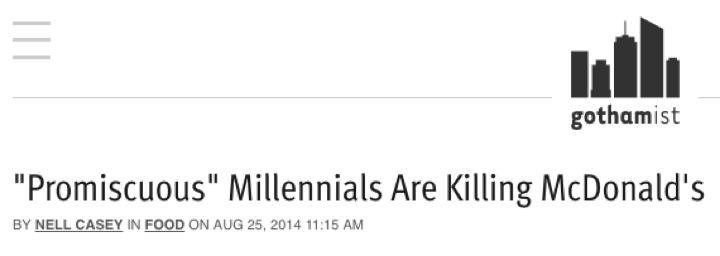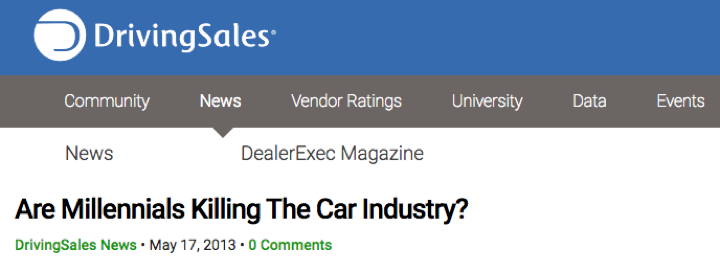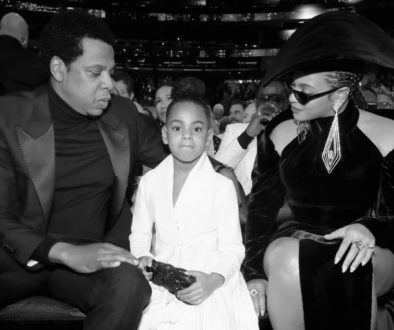Millennials Are Killing Consumerism, But It Comes With A Cost

And no, it’s not the cost the media tells you it is.
Over the last couple of years, millennials have been blamed for some industry’s declines in sales in corporate media headlines. Take a look:






These headlines are in response to millennials not spending as much money on golfing, movies, cars, or what have you. This could be because of taste change on what to spend money on, or, the most likely scenario, that millennials are losing money to spend.
The societal rule and expectation for keeping the economy afloat is to spend, spend, spend, buy, buy, buy. When an economy deeply relies on these specific types of interactions to keep itself from ultimate destruction, the possibility of ultimate destruction comes closer and closer if there is less money to spend or to buy; it’s a very vulnerable economic system.
Millennials have grown up during the Great Recession, have suffered with lowering employment levels, have suffered with wages not keeping up with inflation, and most prominently, have had to deal with the massive cost and burden of tens, even sometimes hundreds of thousands of dollars of student loan debt. So no wonder millennials haven’t been spending money on cars and golf, because the system we have set up does not allow for them to spend and to keep up the fragile economy.
Not only that, those student loans simply existing by themselves also make the economy more susceptible to disaster.
Sovereign Man writes: (https://www.sovereignman.com/trends/this-new-bubble-is-even-bigger-than-the-subprime-fiasco-21199/)
By 2007, the total value of these subprime loans hit a whopping $1.3 trillion. Remember that number. And of course, we know what happened the next year: the entire financial system came crashing down. Duh. It turned out that making $1.3 trillion worth of idiotic loans wasn’t such a good idea.
By 2009, 50% of those subprime mortgages were “underwater”, meaning that borrowers owed more money on the mortgage than the home was worth. In fact, delinquency rates for ALL mortgages across the country peaked at 11.5% in 2010, which only extended the crisis. But hey, at least that’s never going to happen again.
Except… I was looking at some data the other day in a slightly different market: student loans.
Over the last decade or so, there’s been an absolute explosion in student loans, growing from $260 billion in 2004 to $1.31 trillion last year. So, the total value of student loans in America today is LARGER than the total value of subprime loans at the peak of the financial bubble.
And just like the subprime mortgages, many student loans are in default. According to the Fed’s most recent Household Debt and Credit Report, the student loan default rate is 11.2%, almost the same as the peak mortgage default rate in 2010.
The situation set up in the recession is almost exactly the same. Instead of homebuyers being lied to, and told they could afford a house they couldn’t, this time students are being lied to, and told they can afford an education they can’t, and the same type of easily burst-able bubble is created.
So while it is a very good thing in terms of principal that millennials are making consumerism die, it’s unfortunately, ultimately for the wrong reasons. And the corporate, out-of-touch print media shaming millennials for a situation of which they have absolutely no control over is not helping.
Maybe free-tuition public colleges would help. Just maybe.
Millennials Are Killing Consumerism, But It Comes With A Cost was originally published in Extra Newsfeed on Medium, where people are continuing the conversation by highlighting and responding to this story.
Powered by WPeMatico


